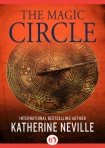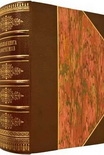The Magic Circle Katherine Neville (top 100 novels of all time TXT) 📖

- Author: Katherine Neville
Book online «The Magic Circle Katherine Neville (top 100 novels of all time TXT) 📖». Author Katherine Neville
“More than law—themis is justice,” Dacian said. “It’s an important distinction. The oracle at Delphi was themistos—one who not only knew right but could prophesy, could translate the higher justice of the gods.”
“So that explains her connection with bees—” I started to add.
“Please,” Wolfgang cut in, frustrated. “I’ve no idea what you mean.”
“Bees were prophetesses,” I said. “Deborah in the Old Testament, and Melissa, a name for the Delphic oracle and for Artemis too—both names meant ‘bee.’ Bees were also identified with the virgin because it was believed they created themselves through parthenogenesis, without copulation.”
“Exactly,” said Dacian. “The virgin is important to the aeon just ending now. Two thousand years ago, when the age began, the virgin goddess was worshiped throughout the world. The Romans called her Diana of the Ephesians: her Greek temple at Ephesus, the Artemision, was one of the seven wonders of the world. The famous statue of the goddess, whose worship Saint Paul so hotly opposed as idolatry, still stands there today, its robes covered with carvings of animals and birds, and also with her prophetic bees. It’s this same goddess in a new incarnation, along with her son, the ‘fisher of men’s souls,’ who forms the axis of the aeon now ending: the age of Pisces, the fish. The constellation opposite Pisces on the circle of the zodiac is Virgo the virgin.”
“Jesus and the Virgin Mary are a duo because those constellations are across from each other in the zodiac?” I said, intrigued as I always was when before my eyes a code was broken that I hadn’t seen myself. I could tell Wolfgang was interested too.
“The twelve constellations of the zodiac are, in reality, of greatly varying sizes,” Dacian pointed out. “Astrologers simply divide the sky into twelve equal pieces like a torte, and appoint one constellation within each slice as its ‘ruler.’ Because of the earth’s tilt on its axis, every two-thousand-year aeon, during the spring and fall equinoxes—the two days each year when day and night are equal in length—the sunrise seems to shift from one of these wedges in the sky to another, moving backwards through the signs of the zodiac. That is, at each new age, the sun appears in a sign preceding the one that would follow, if the sun were moving through its normal course in the span of an ordinary year. Which is why the succession of aeons is called the Precession of the Equinoxes.
“Throughout the past two-thousand-year cycle, during the equinoxes, we’ve seen the sun rise against the backdrop of the dual constellations jointly ruling this age: Pisces at the spring equinox, and Virgo in autumn. In this sense, the character of the age is defined by the character of its rulers. One might call it celestial mythology.
“It seems of great interest that the legends of all peoples have so closely matched the archetypal images associated with each new aeon. The age of Gemini, for example, was an historical period noted for legends of twins: Remus and Romulus, Castor and Pollux. The next age of Taurus, the bull, was symbolically represented by the Egyptian bullgod Apis, the golden calf of Moses, and the White Bull of the Sea in Crete, who fathered the Minotaur. The age of Aries, the ram, is associated with the Golden Fleece sought by Jason’s Argonauts, the ram’s horns of Alexander the Great, and other initiates of the later Egyptian mysteries. And of course Jesus the Lamb, who was the chief pivot of the transition from the Arian age into the one that is just now ending: the age of Pisces.
“Fish symbols, too, have penetrated throughout this aeon. There’s the Fisher King, who guarded the Holy Grail sought by King Arthur and his Round Table of holy knights. Though the Grail chalice itself would be a more appropriate symbol of the coming new age—pouring out, you see.”
We had cut through an open plaza with a grotesque Baroque fountain splashing water everywhere. I knew we were approaching the Ring.
“What can you tell us about the age of Aquarius?” I asked Dacian.
“From the beginning, the image of this age has been rather like that of a deluge,” Dacian told me. “Not a flood such as Noah experienced in Genesis, where the earth was drowned in waters from the heavens as punishment for mankind’s sins. Instead, this will be a time of unexpected, volatile upheaval in the fabric of the entire social order. The liquid the water-bearer pours out is seen as a gigantic tidal wave of liberation: the waters of the earth will rise, gushing wellsprings of freedom unleashed against all bonds of tyranny—at least, for those seeking such liberation. It seems no accident, therefore, that Uranus, the planetary ruler of this coming age, was discovered at the dawn of the French Revolution.
“According to the ancients, our coming age will be ushered in by unchecked waters gushing forth. Those who build dams to hold it back, who construct walls to resist change, who are repressive, inflexible, unaccepting—those who wish to turn back the clocks, to return to a golden era that never existed—will themselves be destroyed by this tidal wave of transformation. Only those who learn to dance atop the waters will survive.”
“‘Go with the flow,’” I said with a smile. “But there’ve been so many books and songs and plays written about the age of Aquarius from my mother’s generation. They made it sound like a time of love and peace and—what was it?—‘flower power.’ What you’ve described sounds more like a real revolution.”
“A revolution describes a circle, too,” Dacian pointed out. “But the ideas you’ve mentioned are fantasies more decadent than any sugar-dusted bonbons: their values do not suit the age at all. Indeed, it’s just such ‘utopian’ concepts that are deeply dangerous in the circumstances. Remember that Utopia, ou topos, translates as ‘no-place.’ And if you look carefully, that’s precisely where you’ll find each





Comments (0)